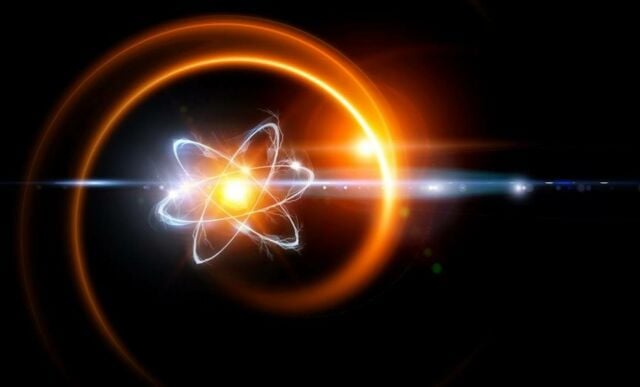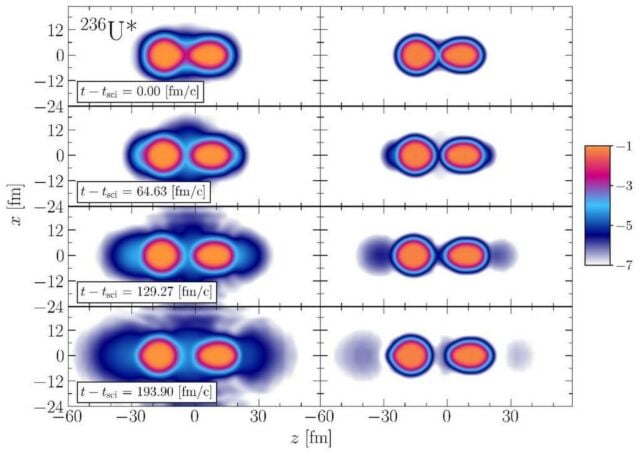
For the first time, scientists revealed what happens when an atom splits in two in a nuclear fusion.
A team from the University of Washington (UW) and Los Alamos National Laboratory used the Summit supercomputer at Oak Ridge National Laboratory to address a long-standing question in nuclear fission: What exactly happens when the nucleus’s “neck” ruptures as it splits in two?
Nuclear fission, the process where an atom’s nucleus divides and releases energy, was first discovered in 1939 and has been extensively studied. While this process powers everything from medical applications to nuclear reactors, some aspects remain a mystery.
For 85 years, scientists have developed different theories to explain what happens during the neck rupture in fission. The earliest theory, known as the “liquid drop” model by Lise Meitner, Otto Frisch, Niels Bohr, and John Wheeler, describes the nucleus as behaving like a charged droplet. When struck by a particle like a neutron, the nucleus deforms, forming a neck between two fragments. As the neck reaches a breaking point, it ruptures and releases energy and particles.
 The left/right columns show a time series of the neutron/proton number densities in log scale for a typical fission trajectory. Credit Los Alamos National Laboratory
The left/right columns show a time series of the neutron/proton number densities in log scale for a typical fission trajectory. Credit Los Alamos National Laboratory
Among the particles theorized to be emitted during neck rupture are “scission neutrons” — neutrons released at the exact moment the nucleus splits. However, due to limited experimental evidence, their existence has been debated.
A team led by UW physicist Aurel Bulgac has now performed the first detailed quantum simulation of neck rupture, achieving the most accurate depiction of this part of fission. The findings, published in Physical Review Letters, challenge some past assumptions about the process.
Here’s a summary of their key discoveries:
1- Neck rupture is not random: Unlike previous models suggested, the location of the neck, where the rupture will eventually happen, is determined well in advance of the split.
2- Proton and neutron timing: The proton neck breaks before the neutron neck, so just before rupture, the neck is mainly held together by neutrons.
3- Speed of rupture: This stage of fission, from the neutron’s capture to the emission of all fragments, is the fastest.
4- Consistency in asymmetric fission: For asymmetric splits, the proton and neutron ruptures follow the same pattern regardless of initial conditions.
5- Scission neutrons confirmed: The team’s results confirm that scission neutrons exist and carry significant energy. The simulation also provides details on their direction and energy, clarifying what was previously unknown about these neutrons.
UW physicist Aurel Bulgac said:
“This is probably the most precise and most carefully obtained theoretical description of neck rupture, without any assumptions and simplification. We have a very specific prediction, which until now didn’t exist. Previous theories were always based on, ‘Let’s assume that this is happening, and if it’s happening, then this probably is going to be seen.’ We didn’t do that. We simply put in the equations of motions known for many decades in nuclear physics with high precision, plus quantum mechanics, nothing else.”
source Physical Review Letters





Leave A Comment